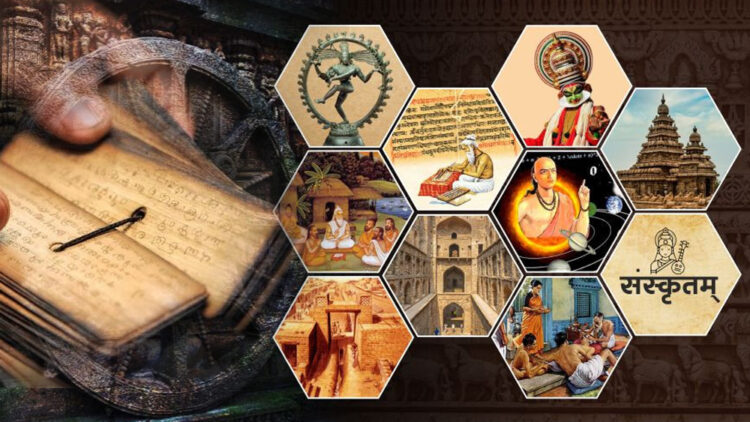For thousands of years, cultures around the world have developed unique systems of healing that go far beyond physical treatment. These practices often blend medicine, spirituality, and community to restore balance in body, mind, and soul. While modern science focuses on biological mechanisms, traditional healing emphasizes holistic well-being — recognizing the connection between humans and nature. Exploring these diverse healing rituals provides insight into how different societies understand health, resilience, and the art of recovery.
Indigenous Healing: Harmony with Nature and Spirit
Indigenous healing traditions often revolve around the principle of harmony — with oneself, the community, and the environment. Native American medicine men, for instance, use herbal remedies, drumming, and sweat lodges to cleanse the body and spirit. The healing process is not just physical but spiritual, aiming to restore balance between the individual and the natural world. Similarly, Aboriginal Australians practice Ngangkari healing, where spiritual healers use touch, breath, and sacred songs to remove blockages and bring peace. These methods emphasize that illness is not an isolated event but a sign of imbalance that must be corrected holistically.
Traditional Chinese Medicine: Balancing Energy Flow
Traditional Chinese Medicine (TCM) is one of the world’s most well-documented healing systems. It is based on the concept of Qi — the vital life force that flows through the body. Health, according to TCM, depends on maintaining the proper balance of Yin and Yang, as well as the harmony of the five elements: wood, fire, earth, metal, and water. Techniques such as acupuncture, herbal medicine, tai chi, and qigong aim to restore this equilibrium. Modern research supports many aspects of TCM, showing its effectiveness in pain management, stress reduction, and immune regulation. The integration of these practices into contemporary healthcare highlights the enduring value of ancient wisdom.
Ayurveda: The Science of Life and Balance
Originating in India over 3,000 years ago, Ayurveda remains one of the most comprehensive holistic health systems in the world. Its philosophy revolves around maintaining balance among the three doshas — Vata, Pitta, and Kapha. Every individual has a unique constitution, and illness arises when these energies are disturbed. Ayurvedic treatments include herbal remedies, detoxification (known as Panchakarma), yoga, and mindful eating. The emphasis on prevention and personalized care makes Ayurveda remarkably relevant today, especially as modern lifestyles lead to stress-related and chronic diseases.
African Healing Traditions: Spiritual Connection and Community
Across Africa, healing is deeply rooted in spirituality, community, and ancestral wisdom. Traditional healers, often known as sangomas or herbalists, use plants, rituals, and divination to diagnose and treat illness. Healing ceremonies involve drumming, dance, and communication with ancestors, reinforcing the belief that health depends on harmony between the living and the spiritual world. Plants such as rooibos, moringa, and aloe have long been used for their medicinal properties — now validated by modern science. African healing emphasizes that recovery is not an individual journey but a communal process supported by faith and collective energy.
Native and Latin American Healing Practices
In Latin America, healing blends Indigenous and colonial influences, resulting in a rich tapestry of folk medicine. Curanderos (traditional healers) in Mexico and Peru use herbs, prayers, and energy cleansing rituals called limpias to remove negative energies and emotional burdens. The use of medicinal plants like coca, chamomile, and guava leaves reflects deep ecological knowledge passed down through generations. The Amazon rainforest, often called the “pharmacy of the world,” is home to countless plant-based remedies, many of which are being studied for modern pharmacological applications.
Table: Global Healing Systems and Their Core Principles
| Culture/Region | Healing Practice | Core Philosophy |
|---|---|---|
| Native American | Sweat lodges and herbal medicine | Purification and harmony with nature |
| Chinese | Acupuncture and herbal therapy | Balance of Yin, Yang, and Qi flow |
| Indian | Ayurveda and yoga | Individual balance among the three doshas |
| African | Ancestral rituals and herbal healing | Spiritual harmony and community well-being |
| Latin American | Curanderismo and plant medicine | Energy cleansing and holistic recovery |
European Folk Healing and Herbalism
Before modern medicine, European communities relied on folk healers, midwives, and herbalists for health care. Remedies were drawn from local plants like chamomile, elderflower, and sage, used for both physical and emotional healing. The concept of the “healing garden” — where herbs were cultivated for medicine — originated in medieval monasteries and rural villages. Practices such as hydrotherapy and homeopathy emerged from these traditions, reflecting an early understanding of natural healing processes. Today, Europe’s revival of herbal medicine and holistic therapy draws inspiration from these ancient practices.
Middle Eastern and Islamic Healing Traditions
Islamic medicine, known as Tibb, flourished during the Golden Age and integrated Greek, Persian, and Indian knowledge. Scholars like Avicenna wrote extensively about health, linking physical wellness to diet, hygiene, and mental stability. The use of prophetic medicine (Tibb al-Nabawi) — which includes honey, black seed, and dates — remains popular for its preventive and restorative benefits. In many Middle Eastern communities, spiritual healing through prayer and recitation of the Quran complements medical treatment, reflecting the unity of faith and science in the pursuit of wellness.
Oceanic and Polynesian Healing Practices
Island cultures across the Pacific have long practiced forms of natural and spiritual healing adapted to their environments. In Hawaii, Lomilomi massage is used to release emotional tension and restore spiritual balance. In Samoa and Fiji, traditional healers apply herbal poultices and coconut oil therapies for wounds, inflammation, and stress relief. These healing traditions emphasize community care, where well-being is seen as a shared responsibility. The sea, plants, and spirituality are deeply intertwined, symbolizing the harmony between human life and the natural elements.
Modern Relevance of Traditional Healing
Traditional healing systems continue to influence modern wellness practices. Techniques like yoga, acupuncture, meditation, and herbal medicine are now integrated into global health care models and wellness industries. Scientific research validates many traditional remedies for their anti-inflammatory, antioxidant, and stress-reducing properties. Beyond science, these practices provide something equally valuable — a sense of connection, mindfulness, and cultural identity. As mental health and lifestyle diseases rise, traditional healing reminds us that well-being is more than the absence of illness; it is the presence of balance and purpose.
FAQs
1. How do traditional healing systems differ from modern medicine?
Traditional healing focuses on balance between body, mind, and spirit, while modern medicine primarily addresses biological symptoms. Together, they can create a more holistic approach to health.
2. Why are traditional healing rituals still relevant today?
Because they address emotional, social, and spiritual dimensions of health that modern medicine often overlooks. They also promote natural living and preventive care, which are essential for long-term wellness.
3. Can traditional and modern medicine work together?
Yes. Integrative health care that combines scientific methods with traditional wisdom offers effective, culturally sensitive, and sustainable solutions to global health challenges.



